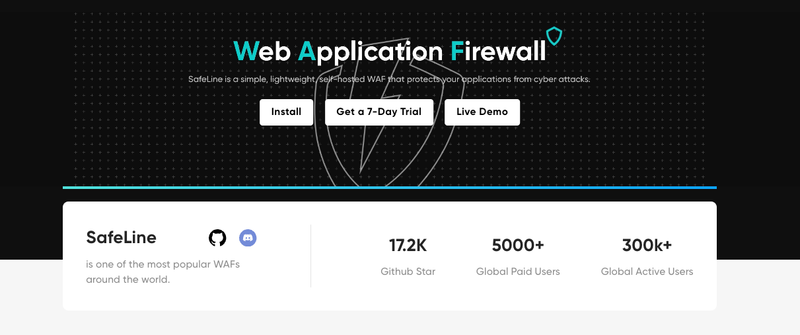When it comes to protecting web applications, Cloudflare is often the first name that comes to mind. But is it always the right fit—especially for developers who want control, transparency, and self-hosted flexibility?
Enter SafeLine, an open-source, self-hosted Web Application Firewall (WAF) designed to give you full ownership over how you handle HTTP traffic, bot defense, and web attacks.
In this post, we’ll compare Cloudflare and SafeLine from a developer’s point of view—highlighting the use cases, pros and cons, and deployment differences between a global cloud platform and a modern self-managed WAF.
Deployment Model
Cloudflare:
Runs on a globally distributed CDN with edge-based protection. Once you change your domain’s DNS to Cloudflare, all incoming traffic is routed through its network. No infrastructure to manage, but also less visibility into internal mechanisms.
SafeLine:
Runs as a self-hosted WAF on your own server, VM, or containerized environment. You own the infrastructure, logs, and control all the behavior. Built on Nginx, it supports reverse and transparent proxy deployments.
✅ SafeLine is ideal for teams that want security without giving up infrastructure control.
Security Approach
Cloudflare:
- Signature-based detection
- Rate limiting, bot management, WAF rules
- Mostly black-box: You can configure rules, but you don’t see how detection really works
- Some features (like custom WAF rules or API protection) are paywalled
SafeLine:
- Based on semantic analysis engine, not just static rules
- Handles SQLi, XSS, RCE, SSRF, path traversal, and more with context-aware inspection
- Supports HTML & JS dynamic encryption and human verification
- All detection logic and logs are fully visible and customizable
✅ If you want deeper insights and explainable decisions, SafeLine gives you that visibility.
Customization
Cloudflare:
- Offers page rules, WAF rules, and caching strategies
- Limited customization unless you pay for Enterprise
- No direct access to traffic engine
SafeLine:
- Deploy your own detection policies
- Write your own detection logic or import custom rules
- Integrate with your own SIEM/log pipeline via syslog
- Full CLI and API access
✅ SafeLine offers a more developer-centric model for WAF customization.
When to Choose What?
| Use Case | Best Fit |
|---|---|
| You need a fast global CDN with built-in WAF | Cloudflare |
| You want full control over logs and rules | SafeLine |
| You need an Enterprise-grade API gateway | Cloudflare (paid tiers) |
| You want open source and self-hosted WAF | SafeLine |
| You run in a private network or air-gapped environment | SafeLine |
| You don’t want to change your DNS | SafeLine |
Final Thoughts
Cloudflare is a solid choice for global scale, ease of use, and DDoS resilience. But it’s not always the best option—especially if you care about transparency, self-hosting, or open-source philosophy.
SafeLine offers a different approach: A developer-friendly, modern WAF with powerful inspection capabilities, total deployment control, and zero vendor lock-in.
Sometimes, all you need is a smart, self-hosted shield that does exactly what you want—no more, no less.
Learn More
- Cloudflare GitHub
- Cloudflare Official Website
- SafeLine GitHub
- SafeLine Official Docs
- SafeLine Community
Have you used SafeLine or Cloudflare for your projects? Share your experience in the comments or join the community discussion.





Top comments (0)